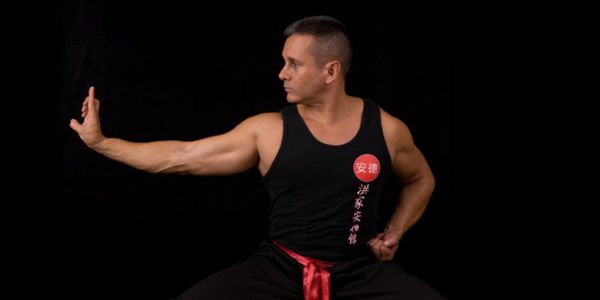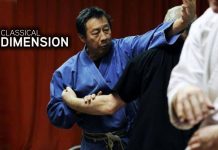There are numerous accounts and legends of the origins and history of the Shaolin Temple. In my humble opinion this is the story of Shaolin. Most likely you learned of the Shaolin Temple through the Chop Sokey Kung Fu movies and the Kung Fu TV series of the 70’s. Some of what you watch was true, yet some of the story lines are fictional. There were indeed 36 Chambers that a monk would have to successfully complete before exiting the temple and graduating. In the Kung Fu TV movie and series young Cain picked up the burning urn between his forearms to engrave the tiger and dragon. In reality that scene is authentic, however in actuality the engravings on the forearms were both dragons.
The legendary Shaolin Temple (Sil Lum in Cantonese) was also known as the “Number One Temple under Heaven” due to those incredible fighting monks. The Chinese characters for Shaolin translate to “Youthful Forrest” or “Youthful Gathering.” Shaolin is the mother of all Asian martial arts (Karate, Tae Kwon Do, Jiu Jitsu, etc.). Kung Fu went from mainland China to the island of Okinawa and later to Japan in the early 1900’s. They called it “karate” which originally translated to “Chinese hands.” Shaolin is translated to the Japanese language as Shorin-ji. Shorin-ji Karate came from Shaolin Kung Fu. The Indian monk Bodhidharma also known as Damo traveled to the Shaolin Temple taught the monks internal exercises for health, yet he was not the originator of Shaolin Kung Fu. Thousands of years before Damo’s visit there were already fighting arts in China. Shaolin is part of the rich history of China.
The Shaolin Temple was a place where numerous martial artists, including fugitives hiding from the authorities, met and shared their martial arts systems. This was a place where different styles and weapons were put to the test before they went out to do battle. You can say that Shaolin was the first mixed martial arts arena. The Northern Shaolin Temple was burned in approximately the 1750’s AD. According to Chinese legends, a monk by the name of Gee Seen survived the burning and traveled to Southern China to become the Abbot of the Southern Shaolin Temple. Gee Seen used the Southern Temple as an underground training center to overthrow the Ching Dynasty and restore the Chinese ran Ming Dynasty. Numerous other styles of Kung Fu originated in the Southern Shaolin Temple including Hung Gar which I’m a Master of and Wing Chung popularized by Bruce Lee. There are five family styles that came from the Southern Shaolin Temple they are Hung, Lau, Choy, Li and Mok. These family kung fu systems continued the Shaolin tradition as rebels fighting the Ching Dynasty. The Southern Shaolin Temple taught the monks the 5 Animal styles of fighting. These movements were developed by monks carefully observing and imitating the moves of the Tiger, Crane, Snake, Leopard and the mythical Dragon. From the Tiger we learn tenacity and acquire power. From the Crane we learn to evade and strike vital points. From the Dragon we get wisdom. From the Snake we learn patience and flexibility. From the Leopard we attain speed and power.
You can classify Kung Fu styles into four major categories: Southern, Northern, and External (hard) and Internal (soft). Southern Shaolin Kung Fu is a southern external style. A southern school is known for low stances, kicks below the waist and fast and powerful overwhelming hands. It is an external style which emphases mostly on power. The Chinese have a saying “Southern Fist/Northern Kicks” which means that in the south they use their hands more and in the northern part of China they use their kicks. Much of this has to do with the terrain and their size and built of the people in the two geographic. In Southern China the people tend to be shorter and stockier. In Northern China they tend to be taller and more slender. Due to the Northern terrain, mountains and open land they walk and ride horses. They favor high kicks and acrobatic movements; where as Southern China’s terrain is agricultural wet land which produces rice and waterways which people live near. Due to the southern life style and terrain they make use of their arms more than their legs. Fighting in wet land or in a boat made it difficult to make large movements and kick high. The low Southern horse stance, for training balance and stability, was developed by the southern kung fu warrior.
Today Southern Shaolin Kung Fu schools teach numerous traditional Chinese weapons of war. Yet, in the Shaolin Temple no blades were allowed. Only non-bladed weapons were allowed through the gates of the temple. Monks were known for their great skills with their walking sticks, or as we call them today the staff. Many define Kung Fu as a pretty, soft, circular, acrobatic, jumping, high kicking art that looks good in tournaments and in movies. The Chinese call this “flowery kung fu” which means that it’s pretty yet it has no defensive value in the streets. A true Southern Shaolin school will teach you an art that was used for war. You will learn to use every move in a form to defend yourself. A Southern Shaolin fighter will attack his opponent violently with tiger claws and crane beaks to the eyes, elbows, tearing grabs, knees, kicks to the knees and groin, Chin Na (joint locks), sweeps, throws, take downs and ground fighting. Southern Shaolin Kung Fu if handed down and taught traditionally, is not a sport but a reality based street self defense. In the end the only trophy that those fighting monks of Shaolin could win in ancient China was their life









